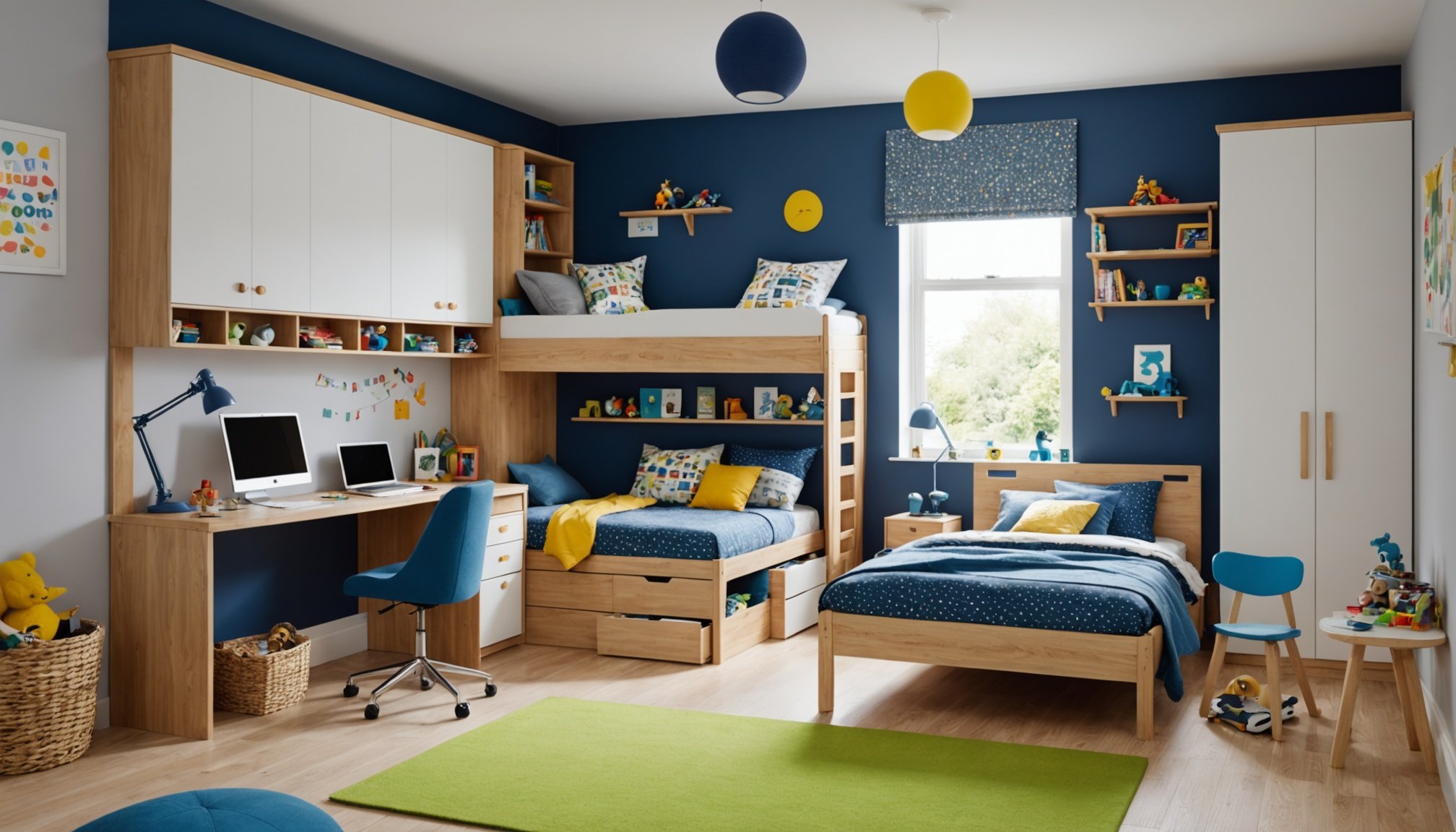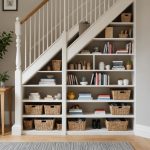Designing a child’s bedroom requires creativity and foresight. As they grow, their needs change, making flexible design essential. Incorporating multifunctional furniture, adaptable decor, and personalized touches transforms the space into a haven for play, learning, and rest. Explore inventive ideas that allow the room to evolve with your child’s interests, ensuring it remains a beloved sanctuary throughout their journey from toddler to teenager. Embrace these design tips to create a vibrant, functional environment that nurtures growth and imagination.
Understanding the Evolving Needs of a Child’s Bedroom
Creating a children’s bedroom design that adapts to changing needs is essential. As children grow, their requirements and preferences evolve, making it crucial to have adaptable spaces. A room that can transition from a toddler’s play area to a teenager’s study zone is invaluable.
Avez-vous vu cela : Transform Your Compact UK Garden: Tips for Designing an Inviting Outdoor Dining Oasis
Importance of Flexible Design
A flexible design accommodates different growth stages. For instance, a bed with adjustable height can suit a toddler and later a school-aged child. Similarly, modular furniture can be rearranged to suit new activities or interests, ensuring the room remains relevant.
Common Changing Needs
Children’s needs change rapidly. Initially, they may require more play space, but as they age, they might need a desk for homework. Storage needs also shift, from toys to books and gadgets. Recognising these shifts early can help in planning a room that grows with the child.
A découvrir également : Styling Your Georgian UK Home: Creative Ways to Arrange a Living Room Around a Bay Window
Balancing Aesthetics with Functionality
While aesthetics are important, the functionality of a child’s bedroom cannot be overlooked. Striking a balance between the two ensures the room is not only visually appealing but also practical. Consider using neutral tones for major furniture pieces, allowing accessories and decor to bring in colour and personality.
Creative Design Themes That Grow with Your Child
Designing a child’s bedroom with creative themes that evolve over time can be both exciting and practical. By selecting adaptable design elements, you can ensure that the room remains engaging and relevant as your child matures.
Nature-Inspired Themes
A nature-inspired theme can be an excellent choice for a child’s room. Begin with elements like forest murals or animal motifs that appeal to young children. As they grow, these can transition into more sophisticated designs, such as botanical prints or earthy colour palettes. This approach not only keeps the room fresh but also instills an appreciation for the natural world.
Fantasy and Adventure Themes
Fantasy and adventure themes capture the imagination and can be easily adapted. Start with castles or pirate ships for younger children, and later incorporate elements like travel maps or celestial decorations as they grow older. This adaptability allows the room to reflect your child’s evolving interests.
Modern and Minimalist Approaches
For those who prefer a sleek look, a modern and minimalist approach offers flexibility. Neutral colours and clean lines provide a timeless backdrop, while interchangeable decor items allow for personalisation. This style ensures the room remains stylish and functional, accommodating changes in taste and need.
Versatile Furniture Solutions for a Growing Child
Incorporating versatile furniture into a child’s bedroom can significantly enhance its adaptability. These multifunctional pieces are designed to meet the evolving needs of children, ensuring that their space remains functional and engaging over time.
Choosing Multifunctional Pieces
Opting for space-saving furniture that serves multiple purposes is a practical approach. For instance, a bed with built-in storage can double as a place to sleep and a solution for keeping toys or clothes organised. Similarly, a desk that converts into a play table can be invaluable as your child transitions from playtime to study time. These choices not only save space but also adapt to changing needs.
Modular Furniture Options
Consider investing in modular furniture, which can be rearranged or expanded as required. Items like stackable shelves or adjustable-height tables offer flexibility and can be customised to fit the room’s layout. This adaptability ensures the room can easily transform to accommodate new activities or interests.
Importance of Quality and Durability
When selecting children’s furniture, prioritise quality and durability. Sturdy materials withstand the wear and tear of daily use, ensuring safety and longevity. Investing in well-made pieces reduces the need for frequent replacements, providing a cost-effective solution in the long run.
Colour Schemes and Decor That Adapt with Age
Creating a child’s bedroom that evolves over time involves thoughtful consideration of colour schemes and age-appropriate decor. These elements can significantly impact the room’s atmosphere and function.
Recommended Colour Palettes for Various Age Groups
For younger children, soft pastels or bright primary colours can stimulate creativity and playfulness. As they mature, consider transitioning to more muted tones or sophisticated hues, like greys or deep blues, which can create a calming environment. These adaptable designs ensure the room remains inviting and age-appropriate.
Tips on Incorporating Removable Decor Elements
Removable decor elements, such as wall decals or peel-and-stick wallpaper, offer flexibility. They allow for easy updates as your child’s tastes change. Consider using these to introduce themes or characters that can be swapped out without hassle, keeping the space fresh and engaging.
Using Wall Art and Accessories for Easy Updates
Wall art and accessories can be powerful tools for personalisation. Opt for framed prints or canvas art that can be easily changed. Accessories like cushions, rugs, and curtains can also be switched out to reflect evolving interests. This approach provides a cost-effective way to update the room’s look and feel.
Practical Tips for Maximizing Space in a Child’s Bedroom
Creating a spacious and organised child’s bedroom can be a delightful challenge. Implementing effective space-saving solutions is key to maintaining a tidy and functional environment.
Strategies for Organizing Toys and Clothes Efficiently
Efficient organisation begins with a systematic approach to toys and clothes. Consider using labelled bins or baskets for toys, making it easy for children to access and return items. For clothes, a divided wardrobe with sections for different types of clothing can streamline daily routines. This method not only saves space but also instills a sense of responsibility in children.
The Role of Vertical Space in Small Bedrooms
Utilising vertical space is crucial in small bedrooms. Wall-mounted shelves can store books or display cherished items without occupying floor space. Loft beds provide additional play or study areas underneath, maximising the room’s functionality. This approach ensures every inch of the room is used wisely.
Creative Storage Solutions That Blend with the Room’s Design
Incorporate creative storage solutions that complement the room’s aesthetics. Think of under-bed drawers or built-in benches with hidden compartments. These elements not only keep the room tidy but also enhance its overall design, creating a harmonious and clutter-free environment.











